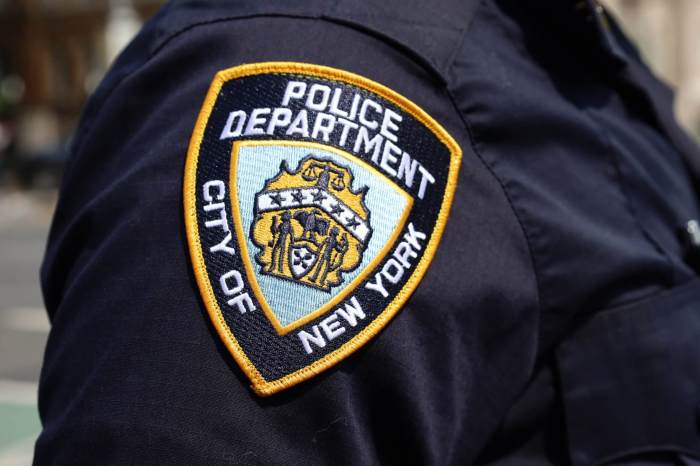Officials are preparing for a major snowstorm headed for New York City, and while you may not be responsible for deciding whether the subway stays open, there are some actions you can take to get ready for a big storm (aside from clearing out the bread and milk sections at the grocery store).
The five boroughs are predicted to get anywhere between 17 and 20 inches of snow between late Monday night and Tuesday, the National Weather Service warned.
Scroll down for tips on how to best prepare before a storm.
Charge cellphone batteries:
This may seem like a no-brainer, but making sure your cellphone battery is fully charged is important to ensure you can make emergency calls and get up-to-date information on the storm.
Prepare a “go” bag:
The city suggests that each person in your home have his or her own bag to grab if you need to leave in a hurry. Each bag should contain copies of important documents, including birth certificates, insurance cards and deeds, as well as extra sets of car and house keys, cash, copies of credit and debit cards, bottled water, a flashlight, battery-powered radio, medications list, first aid kit and toiletries. For even more go bag suggestions, visit nyc.gov/site/em/ready/gather-supplies.page.
Put together a disaster kit:
Similar to the “go” bag, you should have enough food, water and other items to last at least three days. The Federal Alliance for Safe Homes suggests you should plan for one gallon of water per person per day and to stock up on non-perishable food items. Other items to include in your disaster kit include: cash, a battery-powered radio, blankets and pillows, first aid kit, toiletries, children’s toys and pet care items.
Prepare your pets:
Don’t forget about your furry friends! You can make a “go” bag and/or emergency kit for your pet just as you would for a child. The city suggests you include a current color photo of you and your pet together (in the event you are separated), medical records with vaccination dates, proof of ownership, a physical description of your pet, an animal first aid kit with flea and tick medication, three days’ worth of food and water and more.
Power outage hacks, courtesy of The Weather Channel:
— Turn the temperature down in your refrigerator and freezer before a big storm hits. If you should lose power, the lowered temperature will keep your perishable food cold for a longer time. You should also try to avoid opening the refrigerator or freezer for too long.
— If your power is out for a while and you’re starting to question the quality of the food in your freezer, The Weather Channel suggests a simple trick using a mason jar. Before a big storm, fill a mason jar with water and food coloring and freeze it horizontally, then turn it vertically. If the ice defrosts and the shape of the ice changes, your frozen food is likely no longer safe to eat.
— Have batteries lying around but they’re the wrong size for your flashlight? Place a small amount of tinfoil in between the battery and the contact points inside the device as a short-term fix in a pinch.
If you lose heat, the NYPD suggests the following:
— Call your building’s owner, manager or superintendent. If the problem is not corrected, call 311.
— Dress warmly with hats, scarves, gloves and layered clothing.
— Insulate your home by hanging blankets over windows and doorways.
— To avoid frozen pipes, open your faucets to allow a steady drip.
— If you have a working fireplace, use it for heat and light. Make sure to keep the damper open for ventilation.
— Remember to eat and stay hydrated; your body needs the energy created by food to provide its own heat.
Write a home inventory:
Create a list of personal property that can be used if you suffer losses during a storm and need to file an insurance claim. Be sure to list all of your furnishings, clothing and valuables, and include descriptions and photographs of all property.
Bring in lawn furniture:
City officials are urging residents to bring in any loose objects that could pose a danger in high winds. This includes lawn furniture, garbage cans and other outdoor ornaments.
Anchor objects outside:
For items that are not safe to bring inside, such as a large barbecue, the city suggests that you anchor down objects so that they don’t become a safety hazard during a storm.
Know your flood risk:
The Federal Emergency Management Agency’s website offers a tool that allows you to plug in your address to find out your risk of flooding during major storms. For more information, visit region2coastal.com.
Move valuable items from basements:
Be proactive about reducing your losses in the event that your home suffers damage due to flooding by bringing all valuables out of the basement.
Useful resources:
PlowNYC: Check the website https://maps.nyc.gov/snow/# to track snow removal throughout the city.
Notify NYC: Sign up for emergency alerts from the city’s Office of Emergency Management via a858-nycnotify.nyc.gov/notifynyc or check Twitter, @NotifyNYC.
911: For medical emergencies or to report a fire.
311: Check @nyc311 on Twitter for the latest alerts.
— To report snow or ice removal issues, call or visit www1.nyc.gov/nyc-resources/service/2489/snow-or-ice-on-sidewalks-report.
— To report a fallen tree or branches, or report it through the app or place a tree service request with the city’s Department of Parks and Recreation via https://www.nycgovparks.org/services/forestry/request.
— To report issues with heat or hot water. NYCHA residents can report issues with heat or hot water to 718-707-7771.
— To report a homeless person who might need assistance.
— To report snow or ice on a sidewalk, in front of a home or business.
— Call to report animal abuse; pets should be brought inside during winter weather, the NYPD says.
Electric or gas emergencies:
— Call 911 if you smell or suspect a gas leak.
— Con Edison gas or electric emergencies: 1-800-752-6633.
— Con Edison outage map: coned.com/en/services-and-outages/report-track-service-issue.
— National Grid: 718-643-4050 or 911 to report a gas emergency.
Emergency shelter:
American Red Cross: 877-733-2767, select option 1.
State government:
— NYS Office of Emergency Management: 518-292-2200.
Transportation:
— Check for the latest service status for subway lines, buses, bridges, and tunnels via MTA.info, or check out @MTA on Twitter.
State highways:
— Motorists can call 511 or go to www.511ny.org, or download the 511NY mobile app to get updates.
– With Alison Fox

















